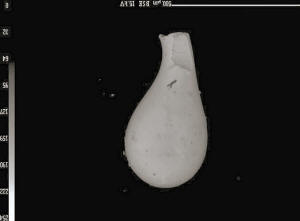|
Blast from the past: comet may have hit
Earth 56 million years ago
 Send a link to a friend
Send a link to a friend
 [October 14, 2016]
By Will Dunham [October 14, 2016]
By Will Dunham
WASHINGTON (Reuters) - Droplets of glass
dug up in New Jersey and from the Atlantic seabed indicate a comet or
some other extraterrestrial object may have smacked Earth 56 million
years ago, roughly 10 million years after the asteroid impact that
doomed the dinosaurs.
Scientists said on Thursday the collision may have triggered a
particularly warm, ice-free period on Earth when important mammalian
groups, including the primate lineage that led to humans, appeared for
the first time.
The findings, published in the journal Science, marked the latest
evidence of the profound influence that past impacts by celestial bodies
have had on life on Earth.
The tiny spherical bits of dark glass, called microtektites, represent
strong evidence of a collision with a comet or asteroid, the researchers
said. They form when a space rock hits Earth's surface and vaporizes the
spot where it lands, ejecting into the air bits of molten rock that
solidify into glass.
The microtektites were excavated from a geological layer marking the
start of the Eocene Epoch about 56 million years ago from three sites in
southern New Jersey (Millville, Wilson Lake and Medford) and an
underwater site east of Florida.

That coincided with the beginning of a warming event, called the
Paleocene-Eocene Thermal Maximum, associated with an accumulation of
atmospheric carbon dioxide. It lasted more than 100,000 years and drove
up global temperatures about 9-14 degrees Fahrenheit (5-8 degrees
Celsius).
The impact of an asteroid about six miles wide (10 km) off Mexico's
Yucatan Peninsula 10 million years earlier killed off many marine and
terrestrial creatures including the dinosaurs and enabled mammals to
gain supremacy.
[to top of second column] |

A tiny sand-grain-size tektites, thought to be created when
vaporized material from an impact solidified while flying through
the air, is shown in this image released in New York, U.S., October
13, 2016. Courtesy Megan Fung/Handout via REUTERS

No such mass extinction was associated with the event 56 million
years ago, although many single-celled ocean-bottom creatures
disappeared. During the warming period, primates and two mammal
groups -- one that includes deer, antelope, sheep and goats and
another that includes horses and rhinos -- first appear in the
fossil record.
The researchers said they have not found the location of an impact
crater linked to the collision. They said geological evidence
suggested the object was a comet.
"We can't really say where it was, or how big, at this point," said
geochemist Morgan Schaller of Rensselaer Polytechnic Institute, who
led the study.
While the findings are not proof that the impact caused the warming
period, they are "a rather dramatic finding in support of an impact
trigger" for the climate changes, said planetary scientist Dennis
Kent of Columbia University's Lamont-Doherty Earth Observatory and
Rutgers University.
(Reporting by Will Dunham; Editing by Sandra Maler)
[© 2016 Thomson Reuters. All rights
reserved.]
Copyright 2016 Reuters. All rights reserved. This material may not be published,
broadcast, rewritten or redistributed.
 |